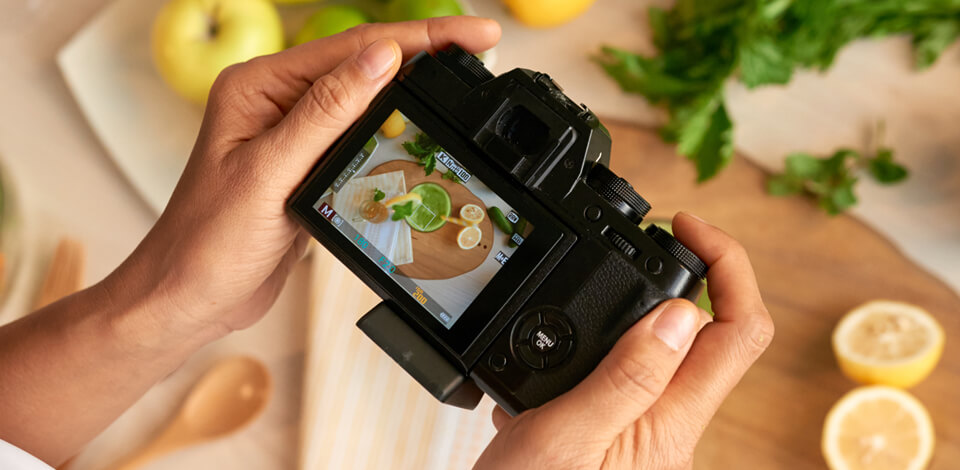
A good camera for food photography will increase sales for your restaurant or cafe.
Food genre is not just about taking a picture of a plate of food; it's about capturing the essence of the dish, the textures, and the colors. And to do that, you need a camera for food photography that can handle the job.
Using a camera for food photos will save you time and money, especially if you're shooting for commercial purposes. A good camera for food photography will produce cleaner and less noisy photos, even in challenging lighting conditions.
Among all the cameras for food photography consider larger sensor size and resolution, the number of focus points, ergonomics and handling, video capabilities, and optical image stabilization.
Additionally, it's important to invest in a high-quality lens for food photos to ensure sharpness and clarity. By considering all of these factors, you can find the perfect camera and lens combination to take your food pictures to the next level.
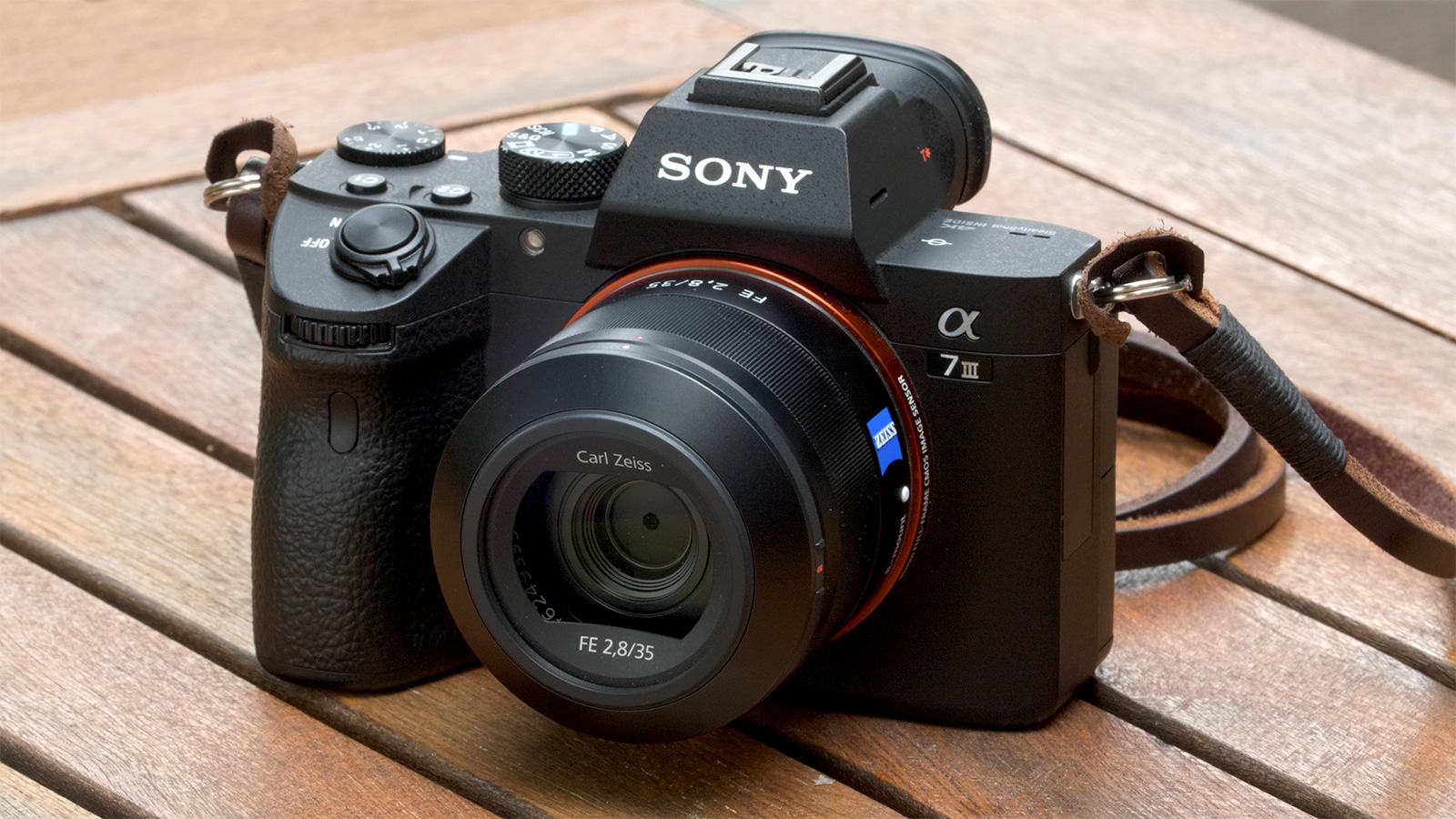
Type: Mirrorless | Sensor: Full-frame | Megapixels: 24.2 MP
As a food photographer, I've been using the Sony A7III professional camera for quite some time now, and I have to say, it's a great camera for food photography. It's small, lightweight, and comes with a full-frame sensor that can capture a wide range of images.
When it comes to shooting food, you want to capture every detail of each ingredient, and the Sony A7III is perfect for that. You can use a macro lens to get up close and personal with your food and show off all the intricate details.

One of the most significant advantages of the Sony A7III is its high ISO performance, which means you can shoot with confidence even in low light conditions. It's not a cheap camera, but if you're serious about taking stunning food photographs, it's worth the investment.
This camera for food photography also has a powerful processor that can suppress light better than some older cameras, and its fast burst mode and lightning-fast autofocus make it an excellent choice for any photographer.
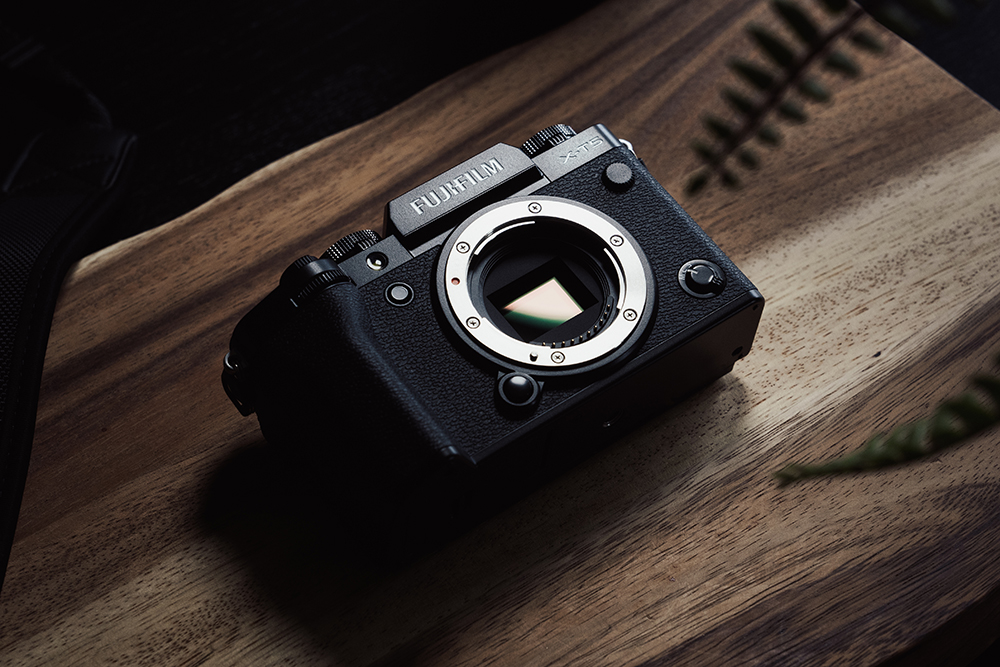
Type: Mirrorless | Sensor: CMOS 5 sensor | Megapixels: 40.2 MP
If you're a beginner looking for the best camera for product photography or food aesthetics, the Fujifilm X-T5 is an incredible choice. It has a vintage retro styling and control layout that is easy to use, and it offers a lot of features that make it suitable for this type of work.
As one of the best food photography camera, its high resolution, wide dynamic range, and pre-shot burst shooting mode make it a standout choice in its class.

However, its limited video functionality and size may not be suitable for everyone. Overall, the Fujifilm X-T5 is a great choice for those who want to become a food photographer who want a high-quality camera that can capture stunning photos with ease.

Type: Mirrorless | Sensor: Four Thirds Live MOS sensor | Megapixels: 20 MP
This compact camera is a great choice among the best cameras for food photography if you're looking for something small and lightweight to carry around on your food journeys. It's part of the Micro Four Thirds system, which means you have a wide range of interchangeable lenses to choose from.
One of the standout features of this camera is its autofocus system. It has been improved from the previous generation, making it better at tracking moving subjects and reducing focus on the background. This is super important when capturing those mouth-watering ice cream photos and other types of food pics.

It produces high-quality images with excellent contrast and detail. The camera also has a flip-down LCD screen, which is really handy for those low-angle shots, and its 5-axis image stabilization helps in reducing camera shake and blur.
When it comes to food photo editing, this camera is a great option since it captures images with enough detail and dynamic range to make post-processing a breeze.

Type: DSLR | Sensor: Full-frame FX-format | Megapixels: 36.3 MP
The Nikon D810 is one of the best cameras for food photography on the market, making it a great choice for capturing stunning pictures. It has a high megapixel count and a wide range of features that allow you to take high-quality photos with ease.
The autofocus system is fast and accurate, making it a good camera for food photography. The camera can capture large file sizes in RAW format, which is great for post-processing without losing quality.
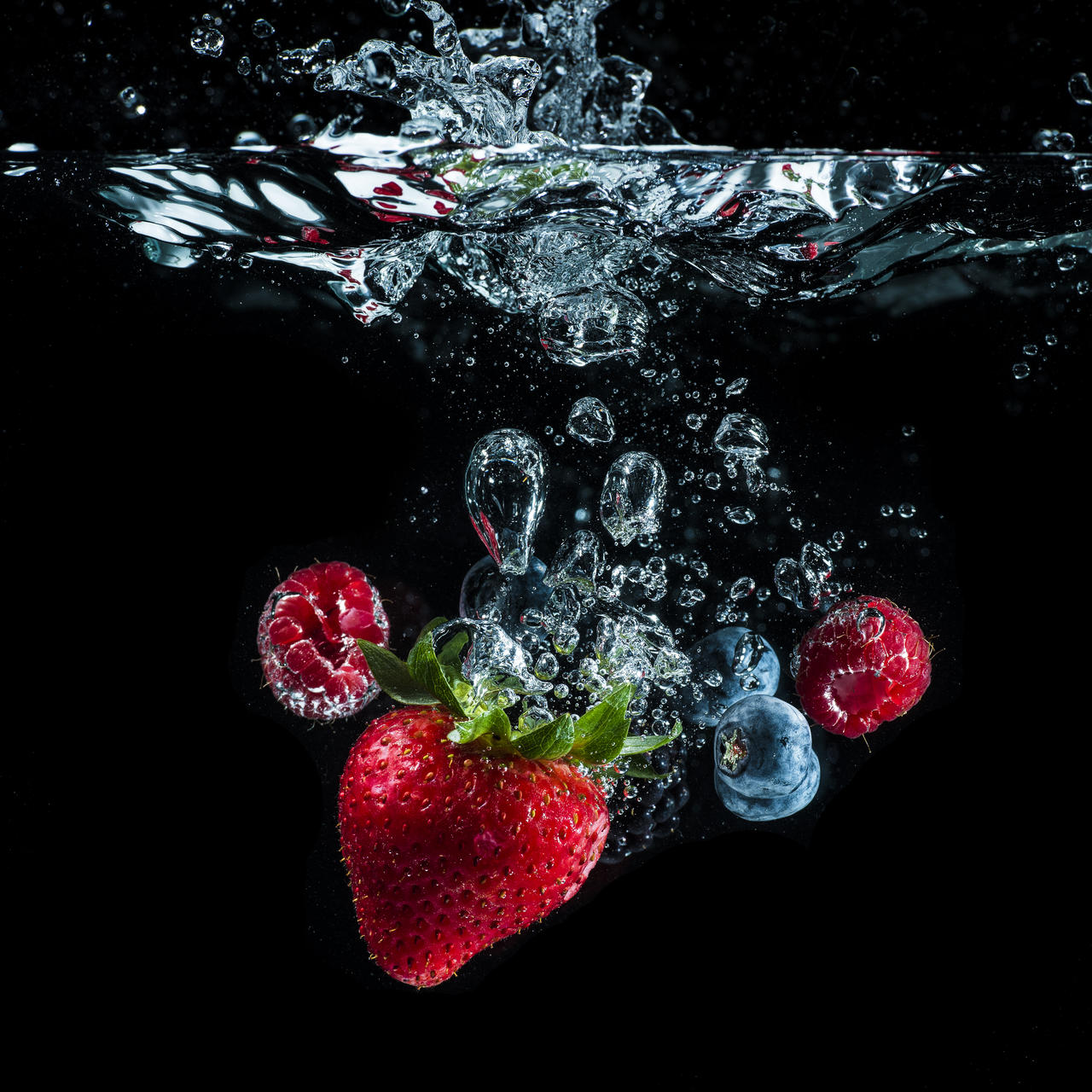
This Nikon photography camera can be a bit bulky and heavy to carry around, especially if you're shooting for long periods of time. Also, the battery life is not the best, so you may need to carry third party camera batteries or a charger with you.
Another issue with this camera is the price. It is a bit expensive, so it may not be the best option for someone who is just starting out in food photography or on a tight budget.
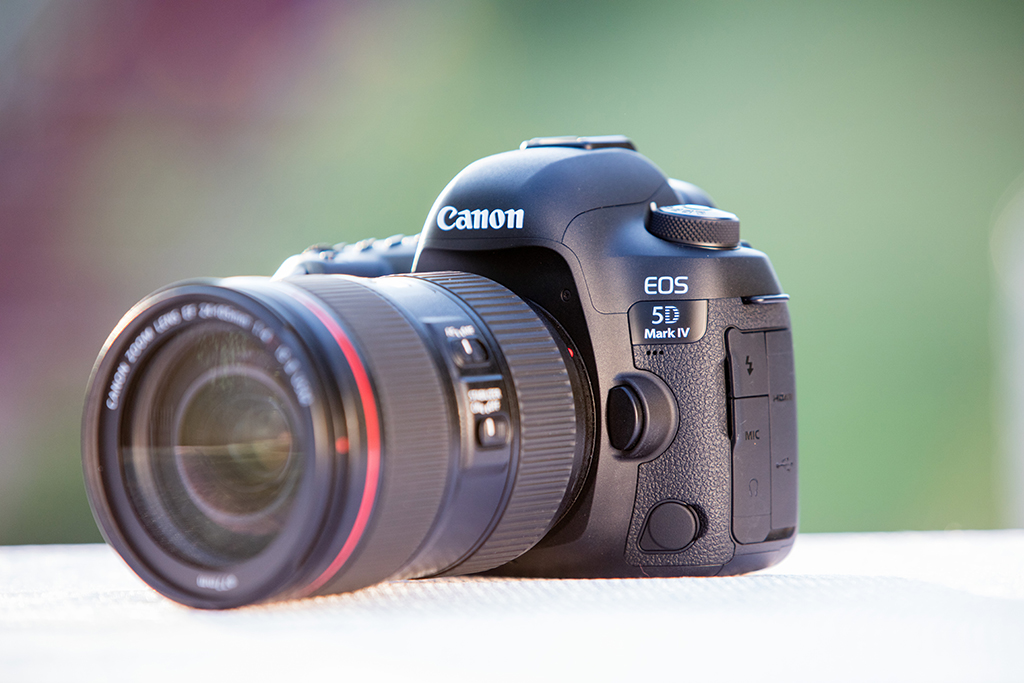
Type: DSLR | Sensor: Full-frame FX-format | Megapixels: 30.4 MP
One of the biggest advantages of the Canon EOS 5D camera for food photography is its high resolution. With its 30.4 megapixel full-frame CMOS sensor, you can capture incredibly detailed and sharp images. This is especially important in food photography, where you want to showcase the textures and colors of the dishes.
The image quality of this camera is also top-notch. It produces vibrant and true-to-life colors, which is essential for making your food photos look mouthwatering. The camera also handles different lighting situations well, thanks to its ISO range of 100-32000.
Another great advantage is the camera's versatility. You can use it for various types of shots, whether it's close-ups of the food or wider shots of the entire scene. The Canon EOS 5D also has a range of lenses available, such as the EF and AF-S lenses for product photography, giving you even more flexibility in capturing the perfect shot.
The camera itself has a compact design, making it easy to carry around and use. It also has a bright LCD screen that is easy to read, even in sunlight. Plus, it comes with a rechargeable battery, so you don't have to worry about running out of power while you're in the middle of a shoot.

Type: Mirrorless | Sensor: Full-frame sensor | Megapixels: 24.2 MP
Panasonic LUMIX S5II comes packed with useful features that can enhance your food shots. One standout feature is its impressive array of focus points, allowing you to capture those intricate details with precision. Additionally, the ability to zoom into scenes to check focusing is a handy tool.
It has the capability to record high-speed 4K video, which is a huge plus if you want to showcase your food in motion. The dual card slots provide ample storage space for all your data, and the headphone and microphone sockets allow for seamless integration with external accessories.

When it comes to still life photography ideas, the S5II delivers excellent image quality, thanks to its high-resolution sensor. With up to 24.2 megapixels, you'll have plenty of room to play with and capture every delicious detail. The camera also offers class-leading image stabilization and impressive continuous shooting performance.
However, like any camera, it has its downsides too. One notable issue is the noticeable rolling shutter in certain situations, which can be a bit frustrating, but still it is the best camera for food photography for beginners and professionals alike.

Type: Mirrorless | Sensor: 1.0'' Exmor RS CMOS sensor | Megapixels: 45.7 MP
Sony ZV-1 II has got a fantastic spread of autofocus (AF) points across the frame, ensuring that you can focus on any part of your delicious dish with ease. And if you prefer manual focusing, don't worry, because this camera supports it too, with the help of focus peaking and a zoom lens.
One of the standout features of this camera is its video capabilities. You can record stunning 4K videos and experiment with a wide range of video modes. This makes it a versatile option for both photography and videography.
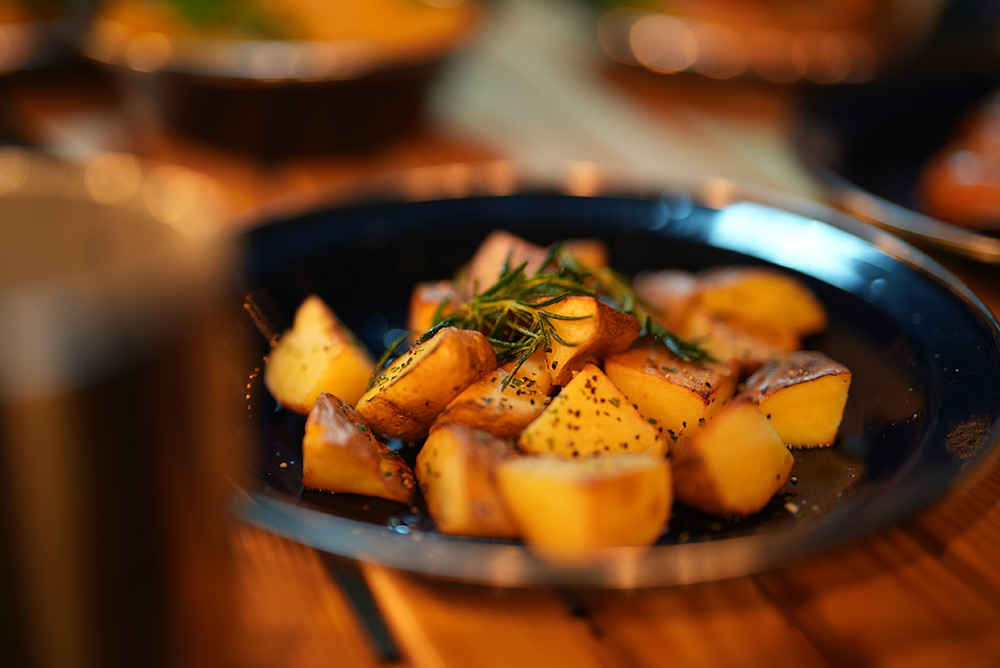
The Sony ZV-1 II is a full-frame mirrorless camera with an impressive resolution of 45.7 megapixels. This means you'll capture incredibly detailed and high-quality images of your food creations. The manual focusing features, like focus peaking and zoom magnification, are a game-changer when you need to capture the perfect shot from tricky angles.
Low-light performance has been improved compared to the ZV-1, and the rolling shutter issue has also been addressed. While it may not satisfy the most discerning videographers, it is more than sufficient for casual vloggers and content creators on a budget.

Type: Mirrorless | Sensor: APS-C format | Megapixels: 24 MP
As a beginner in food photo blogging, you need a camera for food photography that can capture stunning images and perform well in low-light. The Sony a6300 is an excellent camera for beginners and experienced photographers alike.
It offers high-quality images and has a fast autofocus system that makes it easy to capture food shots quickly, even in macro mode.

It delivers outstanding low-light results, producing clean results with very little image noise at higher ISO levels, making the camera perfect for shooting food in dimly lit restaurants.
One of the hidden minuses of the Sony a6300 is its battery life, which is good but not as long as some high-end APS-C cameras. However, with a warranty, this issue can easily be resolved. With its user-friendly interface and basic features, the Sony a6300 is an excellent camera to start with for any aspiring food photo blogger.

Type: DSLR | Sensor: Full-frame | Megapixels: 26.2 MP
Canon EOS 6D is a powerful full-frame DSLR camera that offers excellent image quality, making it a great choice for food photography. It has a wide ISO range, which allows you to capture stunning images even in low light conditions. The autofocus system is impressive, ensuring that your food shots are sharp and well-focused.
Additionally, the camera is compact, quiet, and reasonably priced, making it a practical option for amateur photographers. One notable feature of the Canon EOS 6D is its advanced image processor, the DIGIC 5+. This processor is significantly faster than its predecessors, reducing noise at higher ISOs and minimizing chromatic aberration. This is particularly useful when using certain lenses.

When it comes to editing your food photos, the ability to shoot in RAW format is crucial. The Canon EOS 6D supports RAW files, which provide you with a vast amount of flexibility during the editing process. Unlike JPEG files, RAW files can withstand unlimited editing without losing image quality.
Another advantage in comparison to other cameras for food photography is its compatibility with a remote control. This feature allows you to capture shots that would otherwise be difficult or impossible to achieve, such as when working in a busy kitchen environment. A remote control also helps you maintain precision while positioning the camera and avoid unnecessary movements that can disturb the food.

Type: Mirrorless | Sensor: Full-frame | Megapixels: 26.2 MP
Canon EOS RP offers outstanding image quality and impressive video capabilities, making it a great choice for food photography. Its full-frame sensor provides excellent image sharpness and quality, especially in low-light conditions. Additionally, it has a wide range of features, including Focus Peaking and Eye Detection AF, which help capture stunning food photos in a shorter period of time.
The camera's compact and lightweight design, along with its articulating screen, allows for shooting at different angles, giving you more creative flexibility with food photography tricks. It also offers a wide range of connectivity options, such as Wi-Fi and Bluetooth, making it easy to transfer files and share them with other devices. The compatibility with a wide range of EF and RF lenses adds to its versatility for various shooting styles.

Canon EOS RP has an ergonomic design with conveniently located power, camera mode, and settings dials, reducing the chance of accidental bumps or catches while using the camera. It is also water-resistant, allowing you to use it in different weather conditions.
The slow burst rate and flash sync speed might limit its usefulness for capturing fast-moving subjects. Additionally, the camera's video capability is limited to 4k at 24fps, which could be a drawback for videographers seeking higher frame rates.

As a food photographer myself, I understand the importance of choosing the right camera for food photography capable of capturing those mouthwatering dishes. So, let's dive into the characteristics and camera functions that truly matter when it comes to selecting the best camera for food photography.
Image quality – at least 24MP. When it comes to capturing the essence of food, you want your photos to be sharp, clear, and full of detail. Look for a camera that boasts a high-resolution sensor, as this will allow you to capture every tiny speck and crumb with precision, which is particularly important for dark food photography.
Sensor – full-frame. Cameras come in two main types: full-frame and cropped sensors. The representatives of full-frame cameras have a larger sensor size, which can mimic the traditional film lenses that were once cherished. On the other hand, cropped sensors may be more budget-friendly, but they can still deliver excellent image quality. Plus, they allow you to shoot at the same focal lengths as their full-frame counterparts.
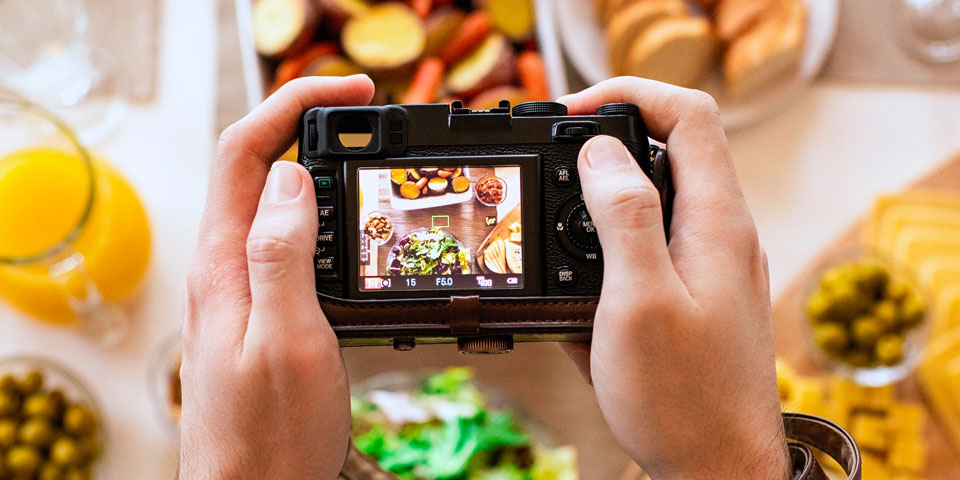
Low-light performance is crucial for food photography. Picture this: you're in a dimly lit restaurant, capturing the tantalizing beauty of a dish. You need a camera that can handle low-light environments like a champ. Look for a camera for product photography that offers good dynamic range and low-light capabilities.
RAW format. RAW files contain a wealth of information and give you more flexibility in post-processing. RAW cameras preserve all the details and colors of your photograph, allowing you to enhance them without loss of quality. So, be sure to choose a camera that can shoot in RAW format. It's like having a secret ingredient for your visual delicacies.
Lenses - multiple. Opt for a lens that can focus on those delectable close-ups and has a wide aperture. The wider the aperture, the lighter it can capture, resulting in vibrant and detailed photos that will make mouths water. A macro one is also essential for capturing those close-up shots of your food.
Manual focusing. This is crucial for getting precise focus on small details in your food, such as the texture of a piece of bread or the seeds on a strawberry. Look for a camera that offers easy manual adjustments, focus peaking, and the ability to zoom in for a closer look.
Tripod. Look for a tripod for heavy lenses and cameras, has adjustable legs and an adjustable central column, and can be inverted for low-angle shots. This is especially important if you want to achieve consistency in shots, whether shooting for a restaurant menu or Instagram feed.
As a food photographer, a DSLR body is a great option as it offers excellent image quality and a range of features to help you capture stunning food images from different angles. A DSLR is more versatile than a smartphone as it has a larger sensor to capture more detail and better low-light performance, allowing you to experiment with different food image angles. When choosing a camera, look for good shutter speed and aperture settings, lower ISOs to prevent digital noise, and the right focal length for your needs as a food photographer. A 50mm focal length is a good all-round option for capturing food from different angles, while a 60mm macro lens is ideal for capturing intricate details.
As a food photographer, invest in a camera that can take great photos of your food from different angles and a tripod to avoid blurry shots. Consider the composition of the shot and focus on the main subject of the photograph, experimenting with different food image angles. Keep colors true-to-life and take photos in natural light as much as possible, or experiment with different lighting setups to create different moods and effects.
As a food photographer, key pieces of equipment include a camera, prime lens, tripod, and lighting. Indirect natural light is often used, but a strobe light can create a dramatic look and highlight different food image angles. I recommend to use reflectors in photography of food, diffusers, and a tethered connection to your camera can improve your shots from different angles. Editing programs like Adobe Lightroom can also enhance colors and retouch images to create the desired food image angle. Also it is essential to have various food photography props for pro-grade shooting.